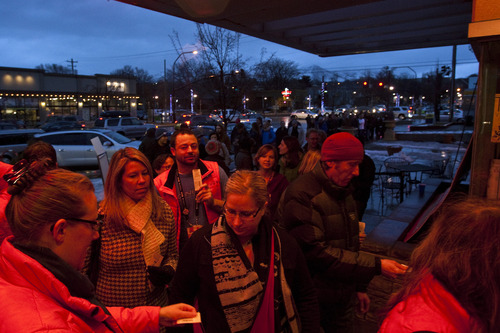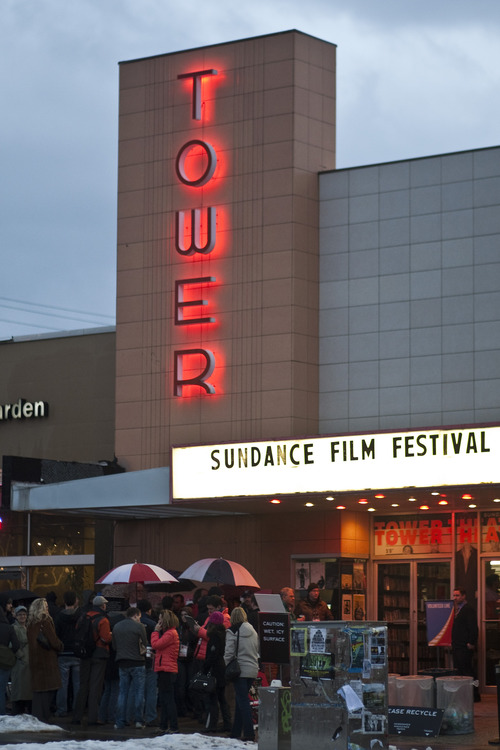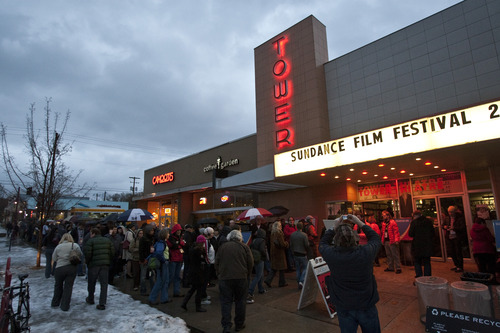This is an archived article that was published on sltrib.com in 2013, and information in the article may be outdated. It is provided only for personal research purposes and may not be reprinted.
Asking how the Sundance Film Festival has altered the film tastes of Utah audiences is similar to asking whether The Church of Jesus Christ of Latter-day Saints affects the state's religious landscape.
Of course the festival has influenced local film tastes, vendors and scholars say. Yet given the complex interplay of cause and effect, and current changes in film exhibition and distribution, it's sometimes difficult to gauge.
Trevor Groth's career path represents one prominent example of the festival's influence. Growing up in Salt Lake City, Groth attended his first Sundance Film Festival in 1988 as a junior in high school.
"I'd always heard of this festival as a sort of mysterious thing in Park City, almost as if it was Oz," Groth said. "Then I bought my first tickets at a record shop, and it changed my life forever."
And how. This year will mark Groth's fourth as the festival's director of programming. The starry-eyed teen who marveled at Sundance's selection of independent film 25 years ago now carries on the tradition for other starry-eyed young film fans of the future.
A similar fate awaited Tori Baker. She worked for the festival in numerous capacities — transportation, registration and the Sundance Institute's summer labs — before becoming the Salt Lake Film Society's executive director in 2004.
A quarter of a million people annually take a seat in front of one of the society's seven film screens — six at downtown's Broadway Centre Cinemas, plus the additional screen at the historic Tower Theatre at 900 South and 900 East.
That number might not impress elites from the coasts, but in Salt Lake City it translates to a steady stream of sophisticated viewers hungry for something different when it's time for a night at the movies.
"[The festival] gives local film audiences here an education they almost don't realize they had, because the festival has been such a pervasive brand for more than 20 years in our community," Baker said. "That makes Salt Lake City a very deep audience for independent cinema in terms of what they search for, counter to what Hollywood offers."
But if Sundance is the opening salvo in every Utah film year, sustaining an interest in alternative and independent films is a yearlong endeavor with ever-increasing challenges. As loyal as Salt Lake City's film audiences are to titles outside Hollywood blockbusters, distributors with an eye on the bottom line will always focus first on bigger markets.
From its 1978 origin as the Utah/U.S. Film Festival to its 1991 name change as the Sundance Film Festival, the event casts a shadow much longer than just for 10 days in January. Its influence is so extensive, in fact, that it might be more useful to ask how the festival has changed the very definition of "independent film" for audiences worldwide, even before the films in question hit Salt Lake City movie screens, DVD shelves and Netflix queues.
Previous to Sundance, "independent film" referred to movies produced largely on grant money or from private foundations. Consider the 1978 film "Northern Lights," about the founding of North Dakota's Nonpartisan League, says Kevin Hansen, chairman of the University of Utah's film department.
Never heard of it? That's probably because the names on its cast were as obscure then as they are now. Robert Redford's festival changed all that.
"He defined [independent film] a little differently, as an alternate batch of movies for young actors interested in vehicles other than standard Hollywood drama," Hansen said. "No one doubts he succeeded in doing exactly what he hoped to do."
But if independent film remains robust as a genre, it's the media through which such films are delivered that are in flux, or even under threat. Film distributors increasingly favor digital formats over print films, forcing art-house theaters to adapt to technology costing up to $100,000 per screen in the switch to digital formats. Baker said the society hopes to add two digital projectors this year, with more on the way.
"We have a very specific mission of keeping open access to all kinds of cinema in our community, with an eye on as many cultures as possible represented," Baker said. "At the same time, you're always keeping an eye on any iceberg that may lie ahead of you."
Twitter: @Artsalt
Facebook.com/fulton.ben















